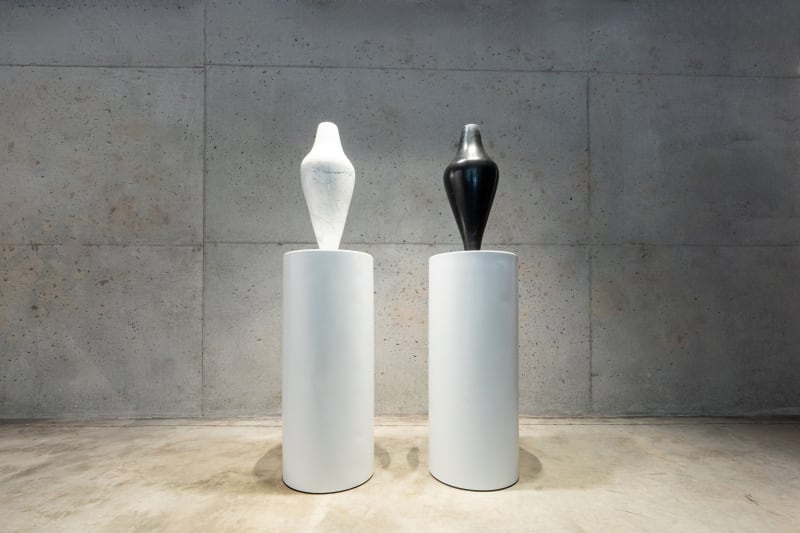According to local legend, Boussaadia was a man from the Sahel whose daughter was abducted and sold into slavery. After searching for her across the desert to no avail, Boussaadia arrived in Tunis, where he began to perform in the streets to earn money. His story, marked by displacement and loss, became central to the healing musical style known as Stambeli in Tunisia.
Saadia, the daughter of Boussaadia, is often overlooked in depictions of the story. Today, M’barek Bouhchichi challenges this narrative in Selma Feriani’s latest exhibition, Les Graines Noires. Upon entering the space, visitors are confronted by two sculptures of her. Saadia (2025) presents two female figurines constructed in black Aziza marble from Tunisia and white Italian Carrara marble. The sloping silhouettes mirror one another, although the dark striations of the white Italian Carrara marble stand in stark contrast to the smooth, supple reflection of the black Aziza. By outlining the tension between the two bodily states, Bouhchichi sets the stage for the exhibition’s central enquiry – how Blackness moves, migrates and is inscribed within wider geographies of representation.
Three sculptures, entitled Boussaadia (2025), explore the legend in more detail. Each piece is formed from charred black wood, its scarred surface shaped around a gaping void. The dark hollow points to the theme of loss, while the distinct shape of each piece resembles guembri, a traditional instrument used in Stambeli music. Stripped of their strings, the disfigured instruments evoke a sense of futility. Visitors are once again reminded that the processes of migration and loss can often rob people of their spirit.

